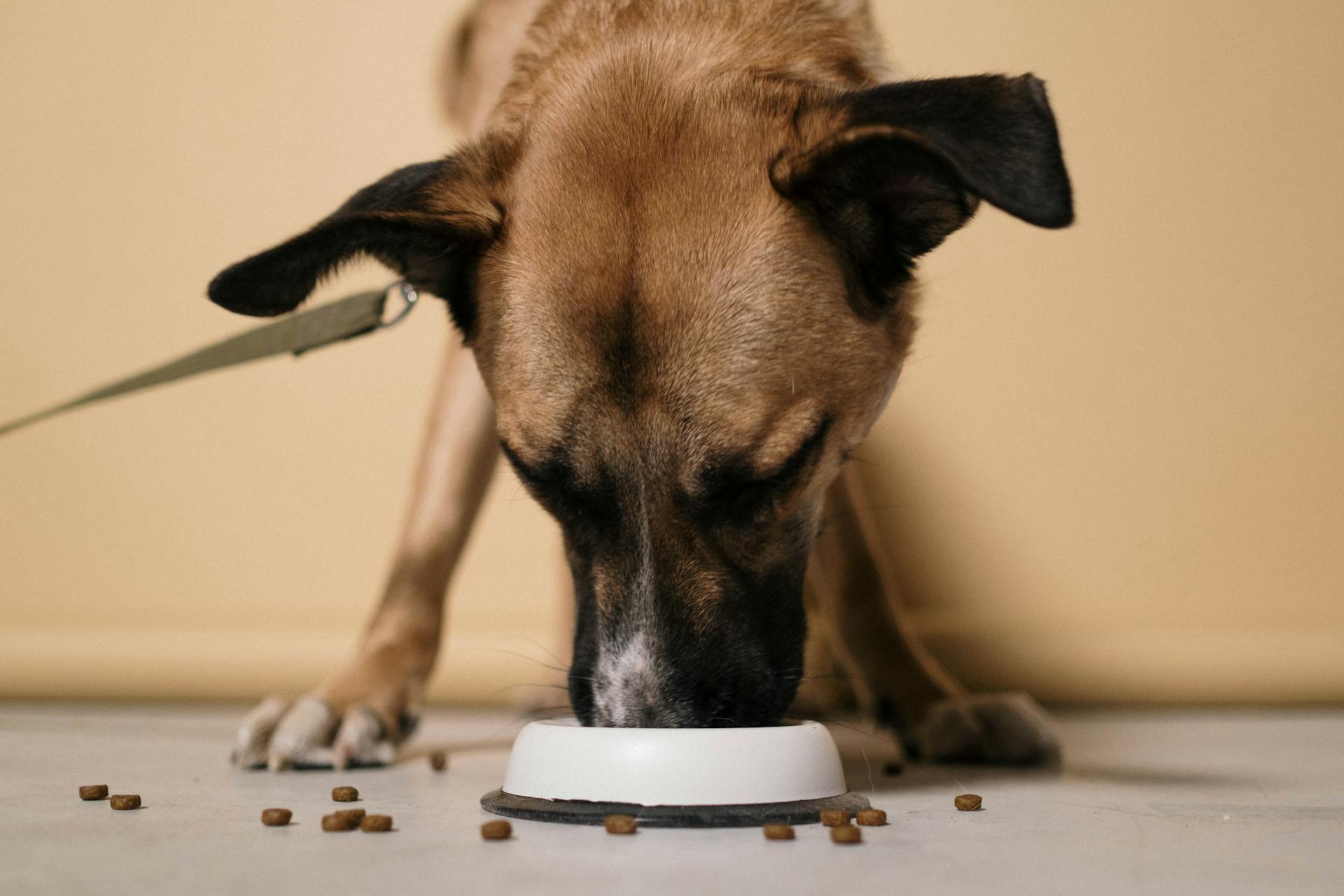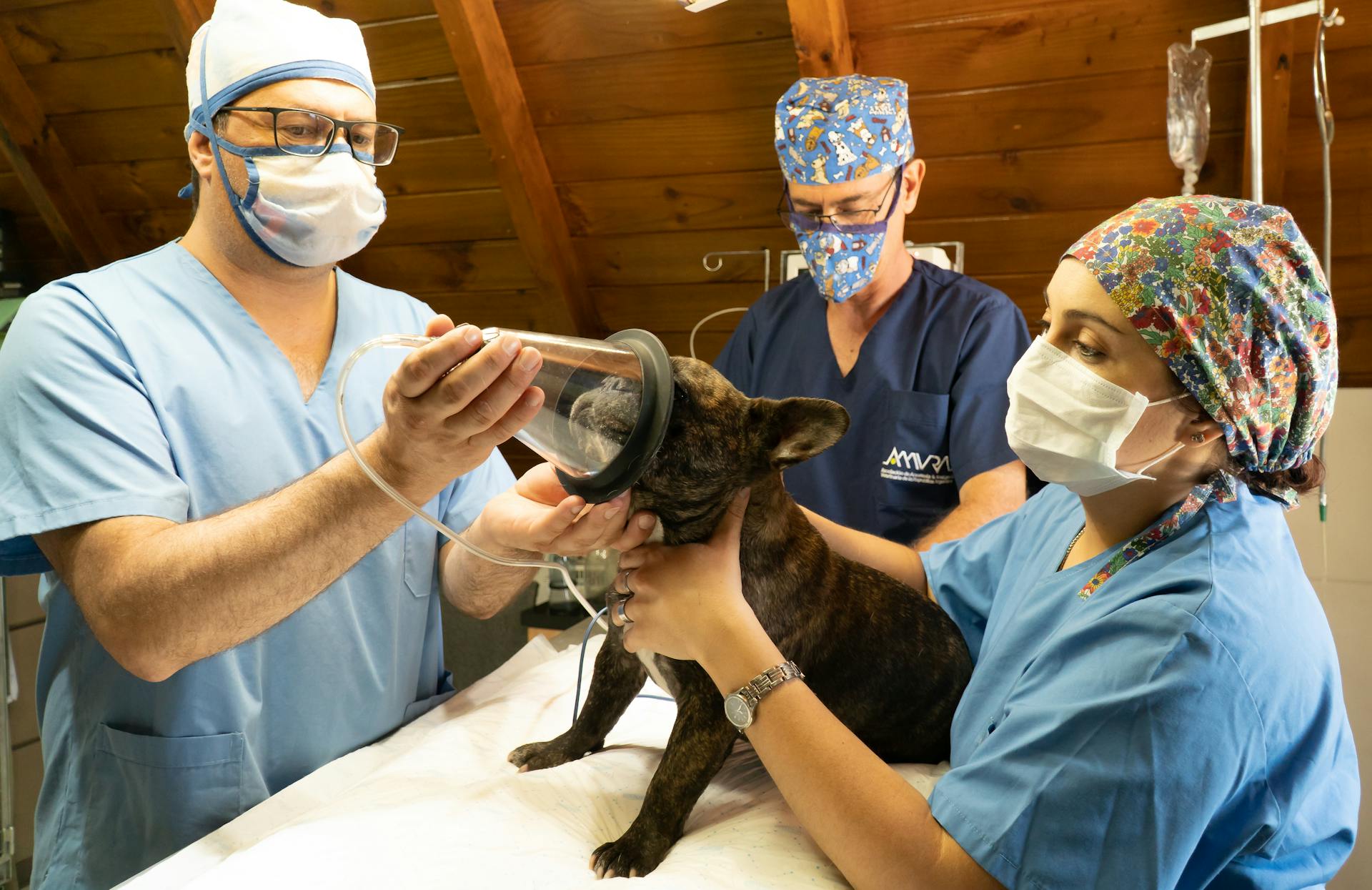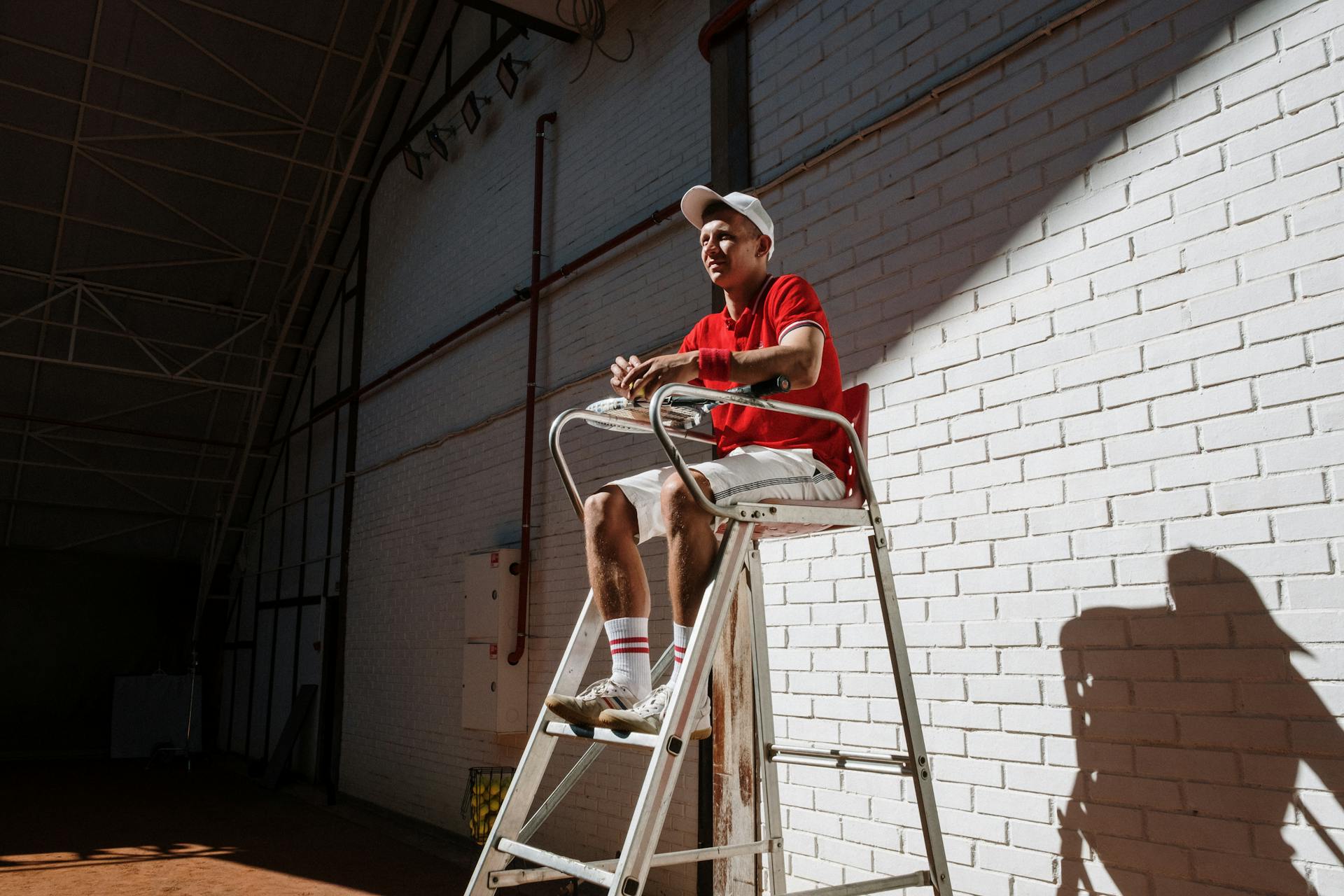
Elevated dog bowls have become increasingly popular, but some pet owners are concerned about their potential impact on their dog's health. The risk of bloat is a major concern, as it can be life-threatening.
Studies have shown that eating from an elevated bowl can increase the risk of bloat by 3 times, as it allows food to enter the stomach more quickly. This can be especially problematic for deep-chested breeds.
Some pet owners swear by elevated bowls, claiming they help with digestion and reduce gas. However, the science is not entirely on their side. Research suggests that elevated bowls do not provide any significant benefits for digestion.
In fact, the American Veterinary Medical Association recommends feeding from a bowl that allows the dog to eat comfortably, without straining or stretching. Elevated bowls may not always meet this criterion, particularly for larger breeds.
Broaden your view: Dog Breeds That Are Good with Other Dogs
What Is Bloat?
Bloat in dogs causes a dog's stomach to expand with air, which narrows its entry and exit.
This makes it difficult for your dog to vomit up excess food or water or burp to relieve the gas.
The expansion of the stomach can even press on the lungs, making it hard for your dog to breathe.
A flipped stomach, also known as Gastric Dilatation-Volvulus, is a serious concern with bloat.
A flipped stomach can cause the pancreas and spleen to flip with it, cutting off blood flow to vital organs like the heart and lungs.
This can send your dog into shock.
You might enjoy: Can Dogs Catch Stomach Bugs
Causes and Risks
Large dog breeds have a much higher risk for stomach bloating, which can be a life-threatening condition.
Bloating can happen in small breeds as well, making it essential to be aware of the risks.
Some factors contribute to the risk of bloat, including eating too quickly or gobbling food, which can lead to swallowing air.
Symptoms of Bloat
Bloat is a serious condition that requires immediate attention. Large dog breeds are at a higher risk, but it can happen in small breeds too.
If you notice a swollen or enlarged stomach, it could be a sign of bloat. Dry heaving is another symptom to look out for, and it's not a normal behavior for dogs.
Pacing and whining are common signs that your dog is uncomfortable or in pain. Shallow breathing can also be a symptom, and it's essential to monitor your dog's breathing closely.
Here are the key symptoms to watch for:
- A swollen or enlarged stomach
- Dry heaving
- Pacing and whining
- Shallow breathing
- Signs of discomfort or pain
Eating Speed
Dogs who eat quickly have a 15 percent higher risk of developing GDV.
Using elevated feeders can make dogs consume food more quickly, which may increase the risk of GDV.
If your dog tends to push their bowl around while eating or drinking, consider using a non-skid bowl to prevent this behavior.
Research and Studies
A study published in the Journal of the American Veterinary Medical Association in the year 2000 found that 53 percent of GDV cases in larger breed dogs could be related to using raised feeder bowls.
Purdue University College of Veterinary Medicine lists not using raised bowls as one of the ways to protect high-risk dogs.
Using raised feeder bowls may double the risk of GDV development, according to an update published with a review of the bloat and elevated feeder debate.
The American Veterinary Medical Association's study involved over 1600 larger breed dogs and found a significant association between elevated feeders and GDV risk.
Dogs fed from elevated feeders had a significantly higher risk of GDV than dogs that ate from bowls on the floor, according to a study that looked at large- and giant-breed dogs in the US.
The study found that elevated feeders may double the risk of GDV in large- and giant-breed dogs.
A faster speed of eating was significantly associated with a higher risk of GDV, and eating off of the floor or a ground-level bowl can facilitate slower eating for dogs.
Here's an interesting read: Dogs Eating from Raised Bowls
Alternatives and Recommendations
If you're considering using an elevated dog bowl for your German Shepherd, it's essential to think twice. Elevated dog bowls may increase the risk of developing bloat, a life-threatening condition in dogs.
There are alternative feeding options that can promote healthy digestion and prevent health issues in German Shepherds. You can try feeding your dog on a flat surface or using slow-feed bowls.
Some other options include filling a KONG toy for interactive feeding and hand feeding. These alternatives can provide mental stimulation and strengthen your bond with your pup. Always check with a veterinarian before making any changes to your dog's feeding routine, especially if your German Shepherd is prone to bloat.
Here are some alternatives to consider:
- Feeding on a flat surface
- Using slow-feed bowls
- Filling a KONG toy for interactive feeding
- Hand feeding
Remember, the right diet is crucial for your pup's health, and a good dog bowl won't make up for a poor diet.
Alternatives and Recommendations
If you're looking to avoid elevated dog bowls, there are plenty of alternatives to consider. Feeding your dog on a flat surface is a great option, as it allows them to eat at a comfortable height and can help prevent bloat.
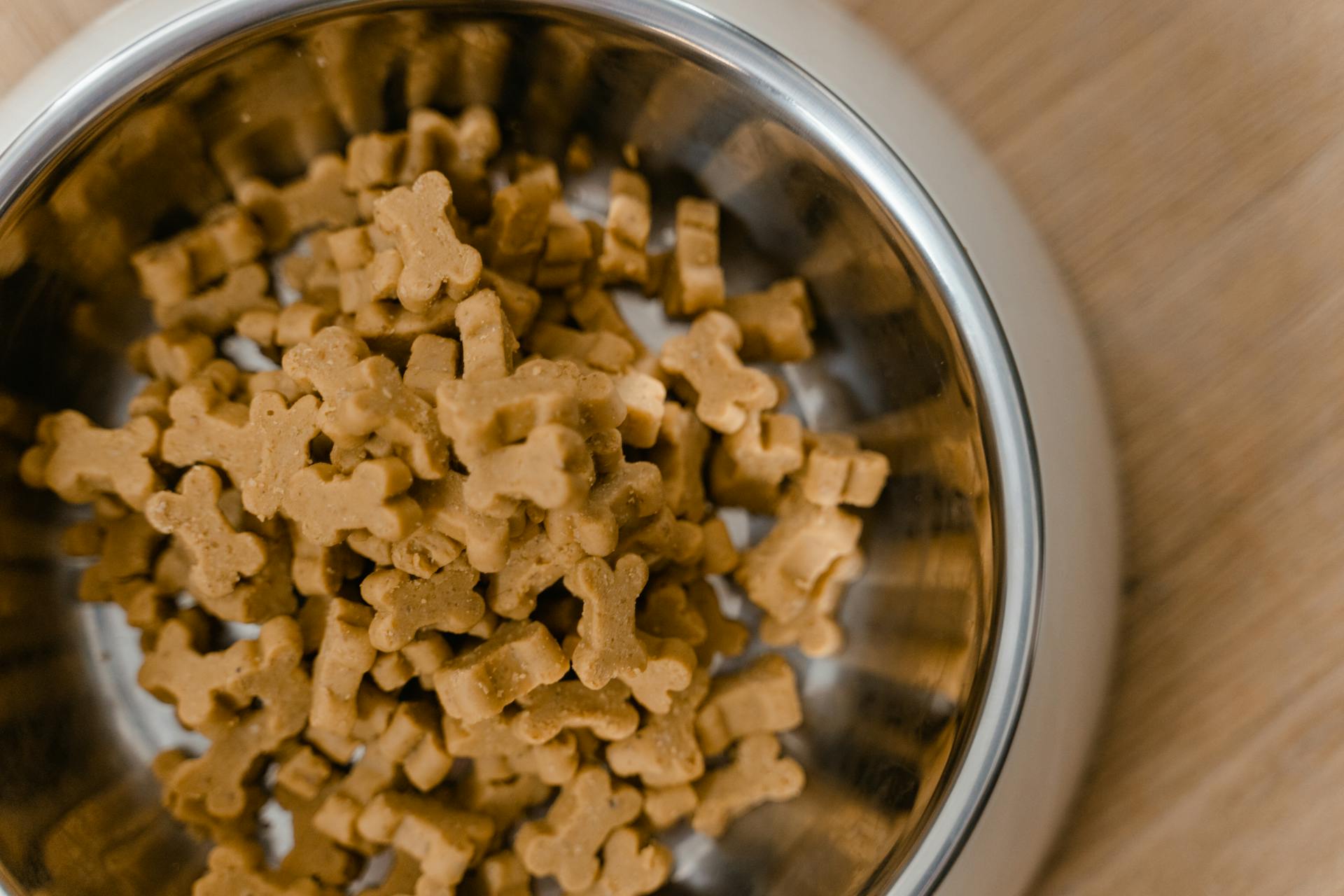
Slow-feed bowls are another excellent choice, as they can help slow down your dog's eating speed and reduce the risk of GDV. These bowls have a unique design that makes it difficult for your dog to inhale their food quickly.
Interactive feeding options like filling a KONG toy can also be a fun and engaging way to feed your dog. This can help stimulate their mind and slow down their eating speed.
Hand feeding is another option that can be beneficial, especially for large breeds like German Shepherds. It allows you to monitor your dog's eating speed and ensure they're not gobbling down their food too quickly.
Here are some healthy feeding options to consider:
- Feeding on a flat surface
- Using slow-feed bowls
- Filling a KONG toy for interactive feeding
- Hand feeding
Remember to always check with a veterinarian before making any changes to your dog's feeding routine, especially if they're prone to bloat.
Are Good for German Shepherds?
Elevated dog bowls aren't good for German Shepherds. They can cause digestive problems due to improper swallowing techniques while eating food off an inclined surface.
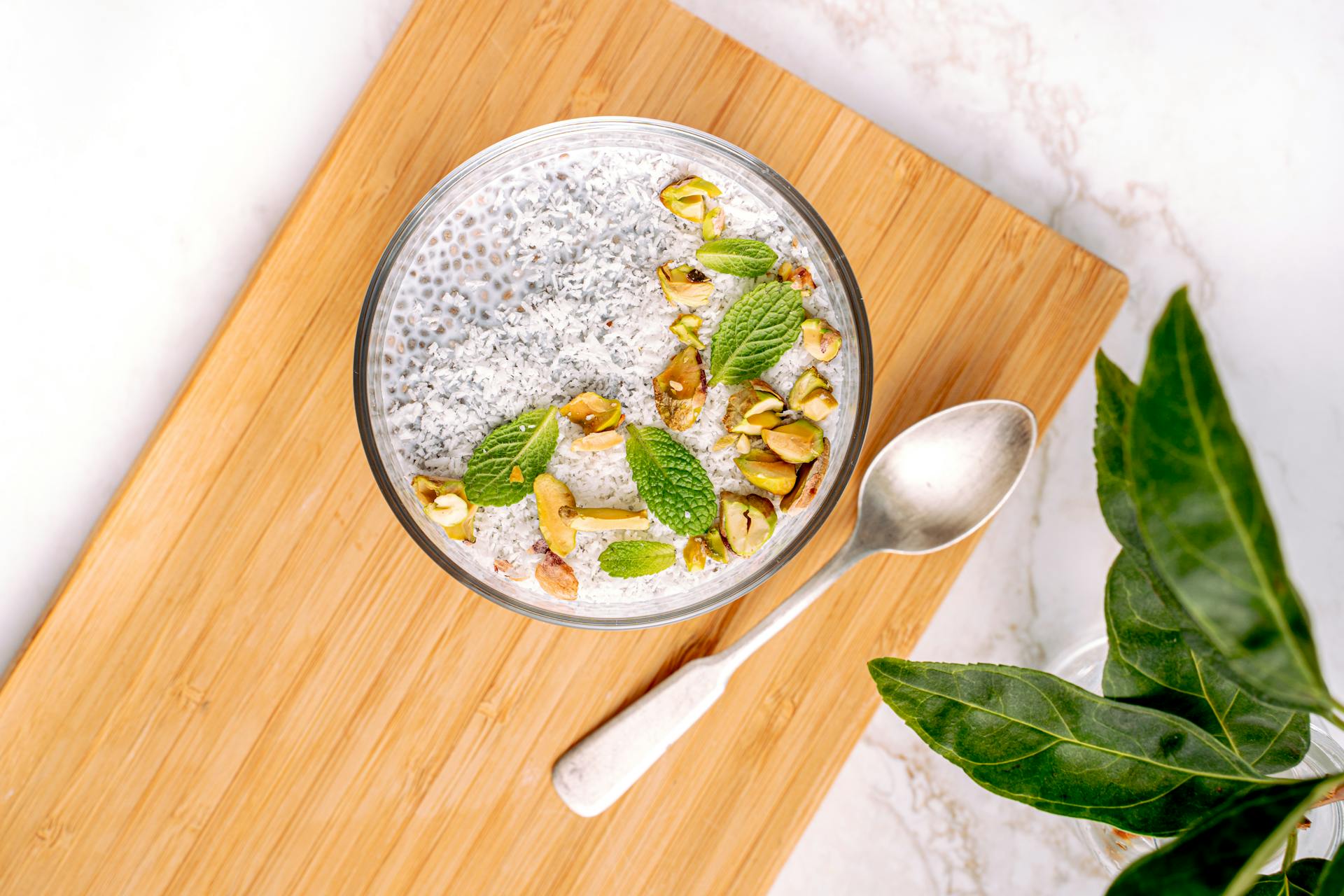
This unnatural position puts extra stress on joints over time, especially in larger breeds like German Shepherds, who already tend towards joint issues.
No studies have discovered a reduced risk of GDV as a result of feeding a dog from a raised bowl.
Feeding your German Shepherd from a bowl on the floor is the safest option.
Conclusion and Summary
The debate about elevated dog bowls and bloat is ongoing, but research suggests it may be time to reconsider this feeding method. Raised feeding bowls can increase the risk of bloat in dogs.
Studies have shown that dogs fed from elevated bowls are more likely to develop gastric dilatation-volvulus (GDV), commonly known as bloat. It's essential to talk to your vet about your dog's risk of bloat, especially if they're prone to this condition.
The American Veterinary Medical Association (AVMA) has published research highlighting the link between elevated feeding and bloat risk. If you're concerned about your dog's feeding method, consult with your veterinarian for personalized advice.
Knowing the signs and symptoms of bloat is crucial in case your dog develops this condition. Consult with your vet on how to identify and respond to bloat in your dog.
For more insights, see: What Is the Slime in My Dog's Water Bowl?
Frequently Asked Questions
How high should a dog's food bowl be?
Position your dog's food bowl so that the bottom of the bowl is at or just below your dog's chest level for comfortable eating. A taller stand is ideal for large breeds or dogs with long legs.
Sources
- https://visionarypet.com/blogs/keto-news/raised-feeders-bloat-risk
- https://www.dogingtonpost.com/is-there-a-link-between-elevated-food-bowls-and-deadly-bloat-an-in-depth-examination-of-associated-risks/
- https://www.shepherdsense.com/are-elevated-dog-bowls-for-german-shepherds-good/
- https://www.dfordog.co.uk/blog/raised-dog-bowls-pros-and-cons.html
- https://www.eastvalleyanimal.com/how-to-prevent-bloat-in-dogs/
Featured Images: pexels.com
